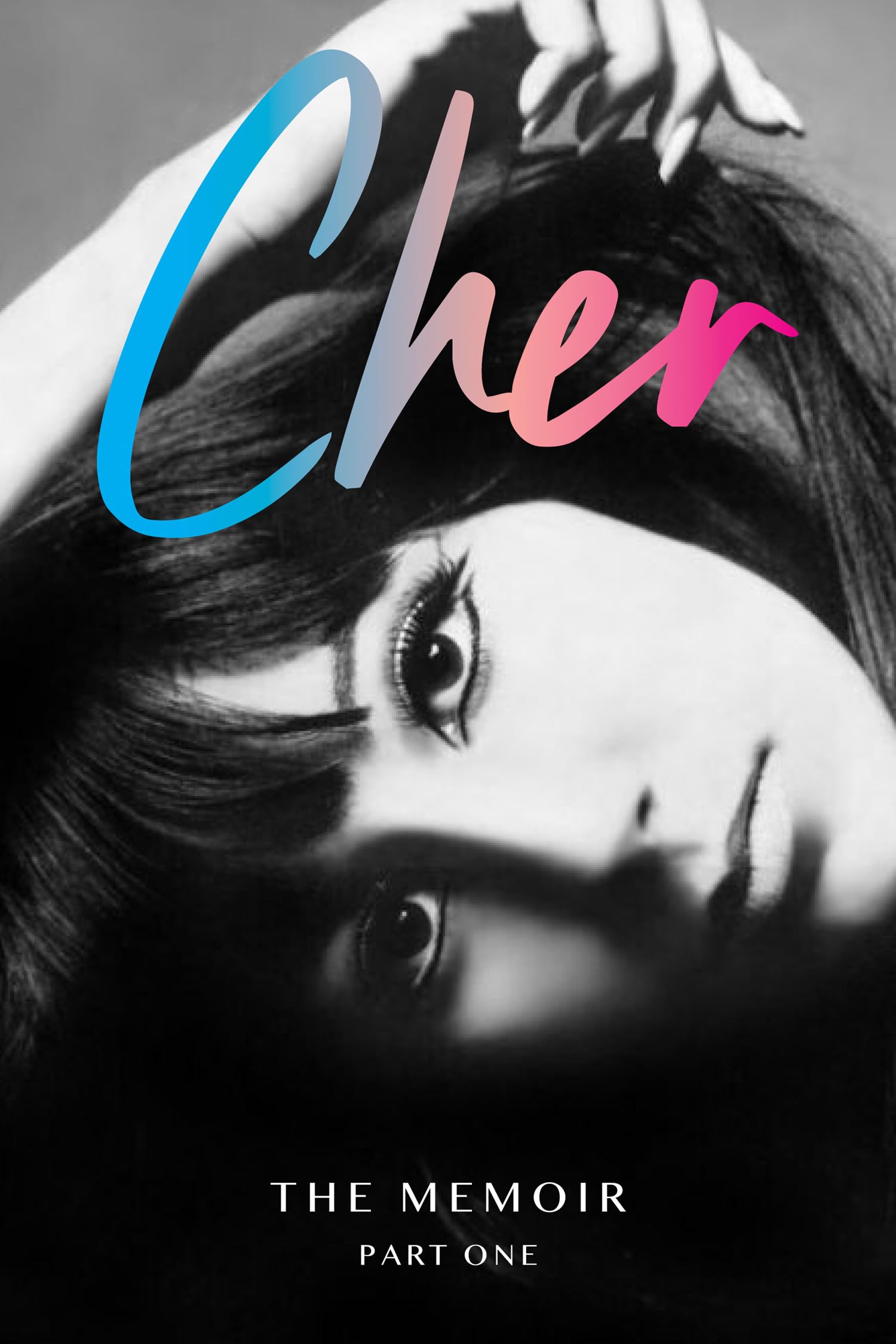The Independent's journalism is supported by our readers. When you purchase through links on our site, we may earn commission.
Cher’s flat new book exposes the limits of the ghostwritten memoir
The legendary performer recruited three different writers to help her with her new memoir – something so stacked with detail and juicy stories that it spans two books, the second of which will be released next year. But her concerns about her book not sounding like ‘her’ have proven sadly correct. Where’s the sass, asks Adam White
Have you heard the one about Cher, Salvador Dalí and a fish-shaped vibrator? The performer and her then-husband Sonny Bono – he of the unfortunate bowl haircut and future in right-wing politics – had been invited to Dalí’s art studio on a trip to New York, where they found the surrealist cleaning up after an orgy with a parade of French oddballs. His pet ocelot was there. So was, at Sonny and Cher’s behest, Francis Ford Coppola. It was the late Sixties, if you hadn’t guessed that already. Cher began fiddling with an odd contraption she found stuck down the back of her seat cushion.
“It’s a beautiful, painted rubber fish – just fabulous,” she once recalled. “It has this little remote-control handset, and I’m playing with it, and the tail is going back and forth, and I’m thinking it’s a child’s toy. So I said to Salvador: ‘This is really funny.’ And he said: ‘It’s wonderful when you place it on your clitoris.’” Later, at dinner, the madness continued. “[Dalí’s assistant] Ultra Violet was there, and she kept rubbing me with her cane, and I thought… I’m going to break this cane across this bitch’s head.”
This story, enviably told to The Guardian’s Rebecca Nicholson in 2013, is my favourite kind of Cher tale. It’s star-studded and absurd. Saucy without being crude. She calls someone a bitch in it. I think of it semi-regularly – Cher’s delivery and timing, her way around a punchline. But I thought of it particularly this week, when I found the same story also recalled in Cher’s eagerly anticipated memoir, a 432-page tome that’s about as heavy as a small animal. (And, hilariously, part one of two – the second half will be released next year.)
The book chronicles the potted history of the 78-year-old’s immediate family, her erratic upbringing, her marriages to Sonny Bono (possessive, deceitful, emotionally abusive) and Gregg Allman (mercurial, addicted, emotionally abusive), and the early ups and downs of her pop career. Cher: The Memoir, Part One climaxes with a cliffhanger that takes place in 1981, with Cher’s sights set on movie stardom. (She’d win an Oscar for the elegant, melancholy romcom Moonstruck just seven years later.)
The Dalí story takes up two pages. But the differences in how Cher told it to Nicholson and how she tells it on paper are stark. In the latter it is oddly stilted; there is no suspense, no silliness, no smack-talk. “We were joined by the Franco-American artist Ultra Violet,” it goes in the book, which reportedly went through a team of ghostwriters. “[She] was wearing a man’s shirt and tie with a velvet skirt. She sat next to me and, saying nothing, repeatedly tapped my leg with her cane. If she does that again, I thought, I’m going to smack her.”
The big problem, then, is that Cher: The Memoir never quite sounds like Cher. It’s Diet Cher. Lukewarm Cher. Whipped-into-shape-by-an-overzealous-editor Cher. There is a smattering of swear words, one funny threat of strangulation directed at her mother, and some brief flashes of withering disdain to the drab and unchic among us. But overall the book is just too conventionally told. There are Wikipedia-style descriptions of many of the famous figures Cher encounters (“Jimi Hendrix’s name was added to a long roll call of talented musicians, singers, and industry experts who had died so-called rock-and-roll deaths in the late Sixties. Among them were the angelic Brian Jones, Janis Joplin, and Brian Epstein.”) Ribald jokes are drained of their spiciness by unnecessary hand-holding. “[The tabloids] claimed I was dating Elvis and Robert Redford,” Cher recalls. “Two men I’d never even met, although they’d have made great bookends (insert tongue in cheek).” Thanks, editor, for explaining that Cher was making a funny!

Cher, famously, has severe dyslexia – it’s why her incredibly unique Twitter account was, at one point in time, a must-follow circus of confusion and random emojis. (“SIT ON YOU OWN DAMN FACE !! IM BUSY !!” [sic] she tweeted at a user named @GagasApostle in 2012.) Writing her own memoir would have been a challenge. But passed off to others to write, the book seems lost in translation. Absent is that je ne Cher quoi, if you will. According to The New York Times, this not-sounding-like-me quality was one of Cher’s biggest worries when she agreed to a tell-all. A first draft by a ghostwriter didn’t read like “her”, she said. Then two more ghostwriters were brought in, the book speedily rewritten in four months. An editor subsequently spent a week with Cher going over the finer details.
This isn’t especially unusual in the world of celebrity memoirs. Katie Price has a library full of the things written by people who aren’t her. The 59-year-old American journalist JR Moehringer was behind Prince Harry’s Spare. Britney Spears’s The Woman in Me, published last year, reportedly had a number of different ghostwriters, each attempting to pull together the pop star’s story into a cohesive whole.
The problem with trying to emulate Cher on the page, though, is that her voice is particularly distinct: a dryer-than-dry mix of innocence, bluntness and almost masculine swagger. Remember that story she first told in 1996, about her mother suggesting she settle down and marry a rich man? “Mom,” Cher would sass back, “I am a rich man.” There’s that deep, silky tone to it, too – something evocative even when transcribed in an interview. It’s as if God wanted to create a voice easily imitable for the world’s drag queens, then worked backwards from there until he made the woman born Cheryl Sarkisian.
That voice is mostly missing from Cher’s memoir (the audiobook, out of necessity due to Cher’s dyslexia, is also partly read by actor Stephanie J Block, who has played the star on Broadway). On the page, absolutely wild tales from Cher’s life are told with sleepy matter-of-factness. There’s a moment in 1960 or so – Cher is in her mid-teens at this point – when she attends a “gay party” with her closeted best friend Steve, which is promptly busted by the police. The pair flee out of a bathroom window, the cops hot on their tails. Returning home, Cher is grounded by her grandmother. It should be thrilling – this is the first time a future gay icon is surrounded by her people! – but it reads as oddly flat.

It’s particularly disappointing because the material is there for Cher’s book to be extraordinary. If nothing else, Cher: The Memoir is an excuse to remind us all that its subject has been around forever. Her first concert was Elvis. She was 15 when a 25-year-old Warren Beatty came onto her. She was 17 and famous when John F Kennedy was shot. She’s been famous for so long, in fact, that at points in the book she finds herself introduced to two plucky up-and-coming musicians: Mick Jagger and Dolly Parton.
Her memories of Sonny Bono also add fascinating complexity to what was long considered one of pop’s most upbeat and joyous collaborations. The pair made wistful love songs together such as “I Got You Babe”, and pottered around on their own TV variety show. They dressed in faux-fur vests and seemed a picture of hippie happiness – but Cher remembers Bono as a man with multiple guises, someone incredibly romantic and creatively talented, but who could be controlling, aggressive and manipulative.
Bono was a 27-year-old songwriter and producer when they first met, and Cher was just 16 (though lied that she was older) – she was dazzled by him and they quickly fell in love. But as Cher became more of a focus in the recording studio, first as a backup singer for acts such as The Ronettes and The Righteous Brothers and then part of a duo with Bono, he began to shut down. “At the start of our time together, he asked me lots of questions, shared a lot about himself, and seemed to relish getting to know me as a person, but that tapered off,” she writes.

Cher loved to dance, but increasingly Bono would stop taking her to clubs. “He realised I was a better dancer, and that made him feel uncomfortable.” He’d insist she wear buttoned-up clothes, and not associate with other men. When Cher discovered Bono was having an affair, he shot back: “I wouldn’t have had to look outside our marriage if I was sexually satisfied.” Much later, after they had separated, she discovers – via her boyfriend, the media mogul David Geffen – that she’d contractually been Bono’s “employee” throughout their marriage, and that she’d barely earned a dime from their music or TV show. “There was something inside him that I could never understand,” she writes, “something that took him from being this fabulous, funny guy to being someone who would take everything from me.”
This is all revealing and fascinating, if written sans flourishes or much real personality. Part two of Cher’s memoir, if authored by the same ghostwriters, will likely only reinforce that feeling – and that’s something we should dread. If the first chapter of Cher’s life is defined by a single difficult man, the second chapter is defined very much by her. It is peak Cher. Big-hair-and-ludicrous-outfits Cher. I-run-this-town Cher. There’s her movie star era, her pop comeback with the vocoder-enhanced electronic number “Believe”, and her many, many feuds. We have her clashes with filmmakers Peter Bogdanovich and George Miller to look forward to. We have the time she took one look at the actor playing her daughter in her 1990 dramedy Mermaids, insisted they looked nothing alike, fired her on the spot and had her replaced with Winona Ryder within days. We have her glorious, glorious trainwreck Burlesque! We have Mamma Mia 2!
Imagine if those sections of her life are written by someone who can’t capture her voice. There is, at least, still time to course-correct. This time next year, I want Cher on paper thwacking half of Hollywood. I want Cher being ruthless and mean. I want Cher!
‘Cher: The Memoir: Part One’ is available now
Join our commenting forum
Join thought-provoking conversations, follow other Independent readers and see their replies
Comments